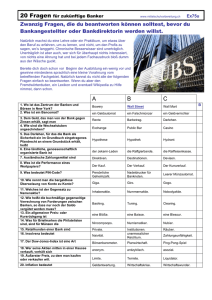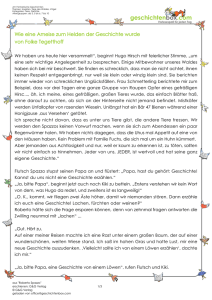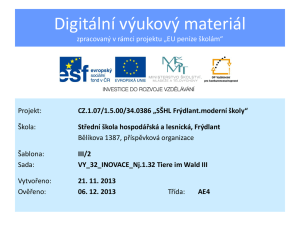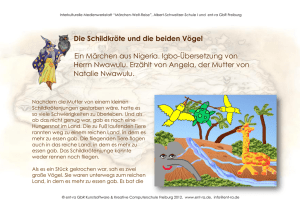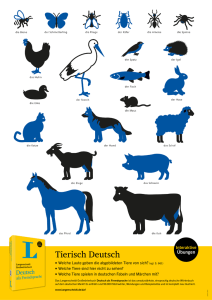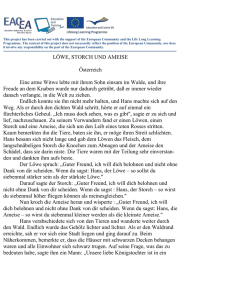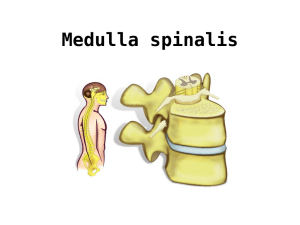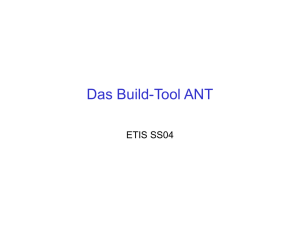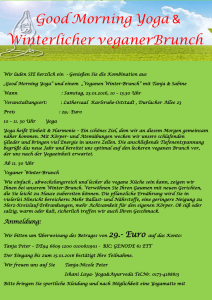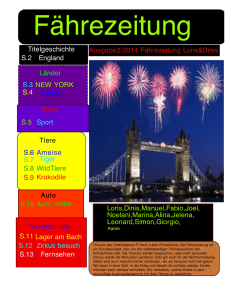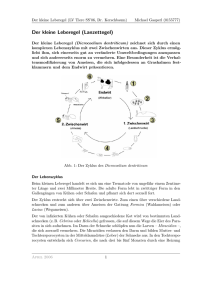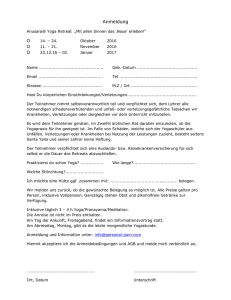Eine alphabetische Ameisen-Anekdote
Werbung
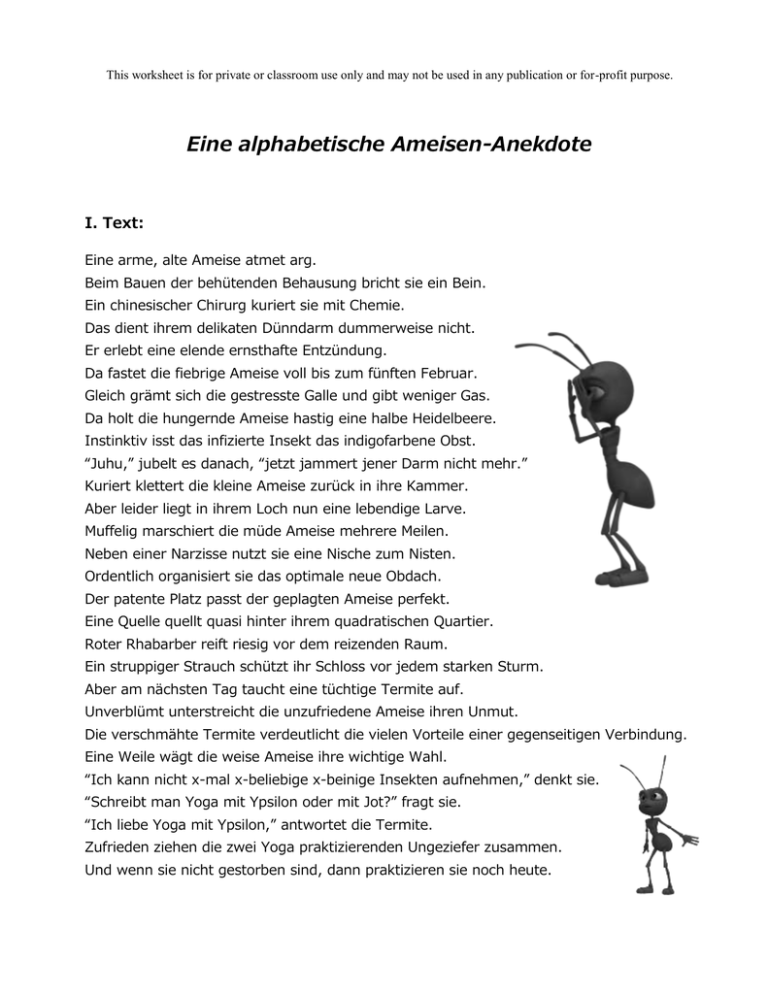
This worksheet is for private or classroom use only and may not be used in any publication or for-profit purpose. Eine alphabetische Ameisen-Anekdote I. Text: Eine arme, alte Ameise atmet arg. Beim Bauen der behütenden Behausung bricht sie ein Bein. Ein chinesischer Chirurg kuriert sie mit Chemie. Das dient ihrem delikaten Dünndarm dummerweise nicht. Er erlebt eine elende ernsthafte Entzündung. Da fastet die fiebrige Ameise voll bis zum fünften Februar. Gleich grämt sich die gestresste Galle und gibt weniger Gas. Da holt die hungernde Ameise hastig eine halbe Heidelbeere. Instinktiv isst das infizierte Insekt das indigofarbene Obst. “Juhu,” jubelt es danach, “jetzt jammert jener Darm nicht mehr.” Kuriert klettert die kleine Ameise zurück in ihre Kammer. Aber leider liegt in ihrem Loch nun eine lebendige Larve. Muffelig marschiert die müde Ameise mehrere Meilen. Neben einer Narzisse nutzt sie eine Nische zum Nisten. Ordentlich organisiert sie das optimale neue Obdach. Der patente Platz passt der geplagten Ameise perfekt. Eine Quelle quellt quasi hinter ihrem quadratischen Quartier. Roter Rhabarber reift riesig vor dem reizenden Raum. Ein struppiger Strauch schützt ihr Schloss vor jedem starken Sturm. Aber am nächsten Tag taucht eine tüchtige Termite auf. Unverblümt unterstreicht die unzufriedene Ameise ihren Unmut. Die verschmähte Termite verdeutlicht die vielen Vorteile einer gegenseitigen Verbindung. Eine Weile wägt die weise Ameise ihre wichtige Wahl. “Ich kann nicht x-mal x-beliebige x-beinige Insekten aufnehmen,” denkt sie. “Schreibt man Yoga mit Ypsilon oder mit Jot?” fragt sie. “Ich liebe Yoga mit Ypsilon,” antwortet die Termite. Zufrieden ziehen die zwei Yoga praktizierenden Ungeziefer zusammen. Und wenn sie nicht gestorben sind, dann praktizieren sie noch heute. II. Fragen. 1. What do the ant’s problems start with? a. building a house b. breaking its leg 2. How is the surgeon trying to cure the ant? a. with surgery b. with medication 3. What is the result of his treatment? a. an intestinal infection b. a more serious fracture 4. How does the ant try to cure itself? a. by fasting b. by running faster 5. What finally cures the ant’s ills? a. an improved gallbladder b. half a blueberry 6. What does the ant find when it returns home? a. a larva b. a hole in its home 7. Where does the ant find a new home? a. next to a flower b. a mile down the road 8. Why is the new home so perfect? a. it’s a bird’s nest b. it has water and food nearby 9. How is the new home protected? a. by a castle b. by a bush 10. How does the ant react to the arrival of the termite? a. with indignation b. with flowers 11. What does the termite do? a. explain the advantages b. try to evict the ant 12. What does the ant not want? a. like other insects b. take in knock-kneed insects 13. What does the ant want to know? a. how to spell the termite’s name b. how to spell yoga 14. What does the ant decide? a. to move to another place b. to let the termite move in 15. How long did the two insects do yoga together? a. until they died b. they may still be doing it II. Adjektive. Was gehört zusammen? 1. behütend a. charming 2. delikat b. mutual 3. ernsthaft c. protective 4. fiebrig d. square 5. hastig e. knock-kneed 6. lebendig f. serious 7. muffelig g. hard-working 8. ordentlich h. gigantic 9. patent i. random 10. geplagt j. hurried 11. quadratisch k. ragged 12. riesig l. blunt 13. reizend m. feverish 14. struppig n. tormented 15. tüchtig o. alive 16. unverblümt p. ingenious 17. verschmäht q. grumpy 18. gegenseitig r. delicate 19. x-beliebig s. rejected 20. x-beinig t. orderly Antworten: I. 1.b; 2.b; 3.a; 4.a; 5.b; 6.a; 7.a; 8.b; 9.b; 10.a; 11.a; 12.b; 13.b; 14.b; 15.b II. 1.c; 2.r; 3.f; 4.m; 5.j; 6.o; 7.q; 8.t; 9.p; 10.n; 11.d; 12.h; 13.a; 14.k; 15.g; 16.l; 17.s; 18.b; 19.i; 20.e
